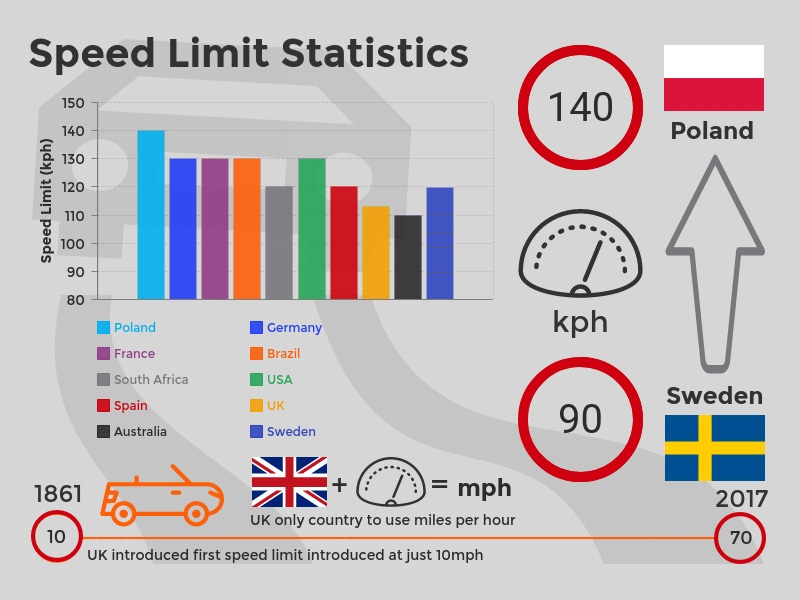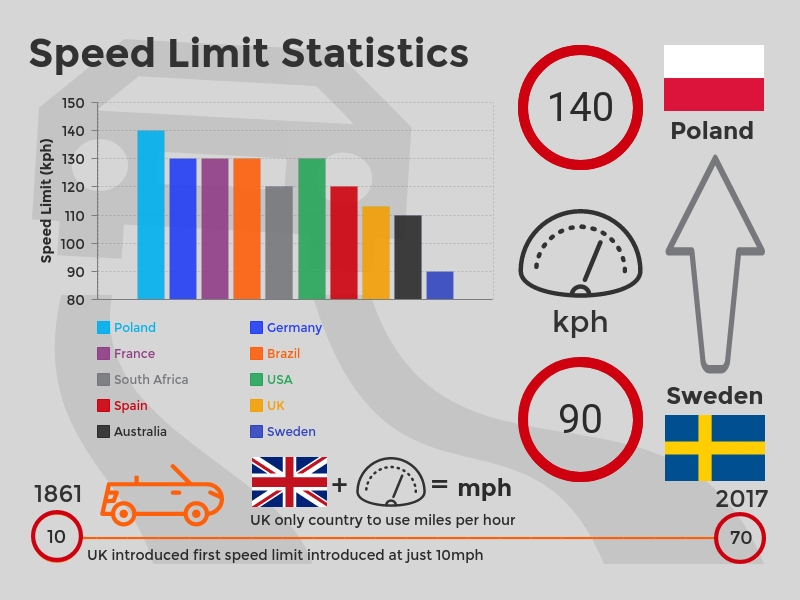The speed limit was born in 1861 when the
United Kingdom introduced a 10 mile per hour maximum known as the Locomotive Act. The
UK is today one of the only places in the world to show speed limits in miles per hour, along with the USA while most other countries use kilometres per hour.

Today there is only one country in the world which has no speed limits at all – the Isle of Man – though famously there are areas of the German autobahns (motorways) which have only advisory speed limits known as 'richgeschwindigkeit'. Ironically fatalities on the autobahns have been less than some countries with lower speed limits like Japan where the limit is 100kph.
Speed limits vary in the various American states and between 1995 and 1999 Montana had a 'reasonable and prudent' speed limit which was non numerical. In the Northern Territory of
Australia a speed limit of 110 or 130kph was introduced in 2007 after years of having no limits.
Poland has the world's highest speed limit which is 140kph on motorways, though the Austrians dabbled with having a 160kph variable limit on motorways in 2006. Variable speed limits are used on the M25 motorway in Britain with great success and they cut down on accidents and delays.
Germany also has an advanced computer controlled variable speed limit system.
The
United States generally has quite low speed limits at about 50mph on many freeways. In most of Europe the corresponding speed is 80kph. Europe designs its speed signs according to the Vienna Convention on Road Signs and Signals and uses a circular with black text on a white background and a red border. By contrast Canada and the U.S use rectangular signs.
 Netherlands
Netherlands
Speed limit cut to 100km/h (62mph) in 2020 by the Dutch courts in order to reduce pollution. The new speed limit is enforce between 06:00 to 19:00. Bewteen 19:00 and 06:00 the speed limit is 120km/h
You may be interested in;